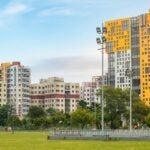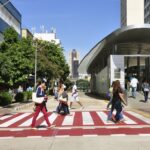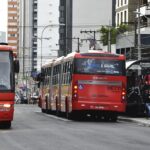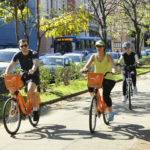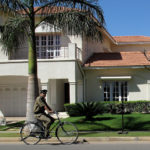Posts tagged with 'mixed-use'
The built environment accounts for over one-third of global emissions. In rapidly developing markets like India and Mexico, a surge in housing construction faces a pivotal choice: lock in high-carbon infrastructure or, with the right interventions, enable resilient, low-carbon designs and ...

The electric vehicle (EV) market is showing steady growth in many parts of the world. In 2023, nearly one in five cars sold worldwide was electric, with China, Europe and the United States accounting for 95% of those sales. In ...

Sprawl is a known and widespread challenge for rapidly growing cities across the world. Unplanned, inefficient development encroaches on natural resources and ecosystems, often reaching far beyond established transit networks. Residents of sprawling urban areas often face socioeconomic vulnerabilities and ...

Imagine stepping into a city where sustainability isn’t just built upwards but also downwards. While cities worldwide grapple with intensifying climate risks—flooding, heatwaves and infrastructure strain—an untapped solution lies right beneath our feet. The underground isn’t just for subways and ...

In the face of rapid urbanization, evolving mobility patterns and the looming climate crisis, the Sustainable Cities Challenge emerges as a pioneering initiative providing a catalytic approach to drive progress. Launched by the Toyota Mobility Foundation in collaboration with WRI ...

Urban development in many cities around the world prioritizes making space for cars over pedestrians, cyclists or public transportation. In Brazil, this design led to an average of more than 30,000 annual road crash fatalities nationwide by the turn of the century, ...

I recently had the pleasure of re-visiting Curitiba, Brazil, thanks to an invitation from the Smart Cities Expo. I made my first pilgrimage in 2000, when Bogotá was implementing its bus rapid transit system, Transmilenio, and returned twice after that. ...

Intersections are among the most high-risk locations along any urban road, where multiple transport modes and commuters collide. In Mumbai, intersections cover only a fraction of the 2,000-kilometer road network but account for nearly 40% of all high-risk zones. Mumbai’s crash ...

Jaime Lerner passed away on May 27, 2021. A world-renowned Brazilian urbanist, he was three times mayor of Curitiba and two times governor of the southern state of Paraná. Besides his great ideas, he was a very kind person and ...

As the COVID-19 pandemic has altered urban landscapes and pushed many people toward active mobility, there’s increased urgency to make roads safer for walking and cycling. Many cities are now tasked with protecting more vulnerable users in addition to creating ...

Monterrey, like other major Mexican cities, rapidly expanded outward during the end of the 20th century. New policies favored investment in new suburban neighborhoods, attracting residents and businesses to the periphery, and provoking several decades of insecurity and population decline. ...

With her recent re-election, Paris Mayor Anne Hidalgo (Editor’s note: no relation to the author) has won a mandate to continue profound mobility transformations in the French capital. Her re-election manifesto promises an even more ambitious second term, furthering her efforts over ...

Transport and urban development are inherently linked. Though the majority of residents in many of the world’s biggest cities do not own a car, cities are often designed around the needs of automobiles instead of the needs of people. In ...

Rapid urbanization in countries such as India is raising people’s incomes, creating huge demand for housing, and increasing vehicle ownership rates in the upper-middle and middle classes. By 2030, 50% of India’s population is expected to live in cities, and ...

By 2050, the world’s population is estimated to grow to 9.6 billion, with 66% living in cities. How can we accommodate urbanization while avoiding costly urban sprawl that can lead to unequal access to transport and increased greenhouse gas emissions? ...












